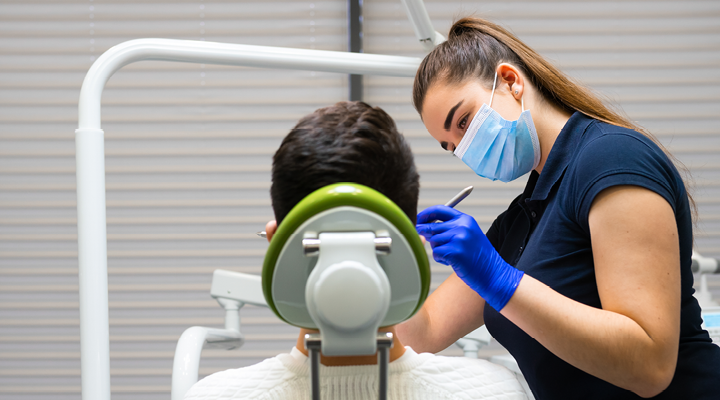If you have dental insurance, you’re taking an important step in caring for your oral and overall health. However, you may not be reaping all the benefits your coverage has to offer.
How to get the most of your dental insurance
Trying to figure out whether you’re getting the most out of your dental coverage can be confusing. Use these tips below to make sure you are getting the full value of having benefits.
Determine which type of insurance plan suits your needs
The first step in getting the most out of your dental coverage is determining which plan type is right for you. If you generally have good oral health and don’t foresee needing specialist care, a plan that is lower in cost and has more limitations when it comes to choosing dentists and dental facilities may provide you with more value. However, if you like to have more flexibility and choice when it comes to oral health care, a plan with higher out-of-pocket costs but access to more providers may be more valuable. Take time to determine whether your current plan is providing the most value for you and your needs.
For more information about insurance plan types check out: Dental HMO vs. PPO dental insurance: what’s the difference?
Take the time to understand your dental insurance plan
If you’re like most people, you probably don’t read the fine print in your dental coverage information packets. Although it’s not the most exciting thing to do, it’s an important step in understanding your dental insurance plan.
Take the time to read through and make notes about important information regarding your benefits. Look for keywords such as:
- Copay: The amount of money you will owe for a specific service. This is usually a fixed amount and is sometimes found on insurance ID cards.
- In-Network Providers: Dentists and oral health professionals who have agreed on pre-established fees for their professional services. Using providers that are out of network may cost significantly more than using in-work providers.
- Annual maximum: The total dollar amount that your dental insurance plan will cover for you and/or you and your family. These maximums are generally based on a calendar year.
- Coinsurance: The percentage of the costs that a policyholder will pay for services. This is different from a copay because the amount will vary.
Having a clear understanding of the costs you may be responsible for is an important step in getting the most out of your dental insurance. You may be surprised by what your plan covers, especially when it comes to procedures like root canals or dental implants. Don’t make the mistake of skipping out on treatments because you don’t understand your insurance plan.
For a comprehensive review of key dental insurance terms check out this glossary.
Use in-network providers
When choosing a dental insurance plan, a great place to start is to figure out which insurance your favorite dentist accepts. Many people are surprised to find out their dentist will no longer accept them as patients because they’re not in their dental insurance plan’s network.
Insurance companies generally negotiate fees for services with specific providers in advance. Once both parties agree on the fees, these providers are considered in-network. If you go to a dentist who is out-of-network, their services are usually not covered, and you may end up paying 100 percent of the costs out-of-pocket. It’s always a good idea to confirm that your dentist accepts your dental insurance plan before your appointment to prevent any surprises.
Utilize preventive oral health care services
One of the most essential things you can do to make the most out of your dental insurance plan is to go to regular check-ups and cleanings. Most dental insurance plans cover 100 percent of the cost of preventive services, so there’s no additional cost to you.
Seeing a dentist twice a year not only keeps your teeth shining but can also help detect potentially serious (and costly) issues. Dentists are trained to look for oral health problems like gum disease, tooth decay, and oral cancer at regular check-ups so they can be treated before they become severe. Taking advantage of preventive services may save you from expensive treatments down the line.
Reach out to your insurance provider
If you’re having a hard time understanding your dental insurance, you may find yourself avoiding procedures that can improve your oral health. Don’t let this be the case! Always reach out to your dental insurance company’s customer service team with questions regarding costs and coverage. They should be able to answer any questions you have and clarify any confusion around your plan.
Getting the most out of your dental insurance plan doesn’t need to be difficult
Remember, dental insurance is designed to help you maintain good oral health and manage the costs of dental care. By being proactive, informed, and utilizing your benefits effectively, you can get the most out of your dental coverage.
To learn more about dental insurance, check out this blog.

